As the saying goes: brushwork creates structure, The evolution of calligraphy strokes has a great relationship with the formation of calligraphy style. The formation and maturity of a style of brushwork indicates the emergence of a new style of calligraphy. Conversely, in the process of forming a new style of calligraphy, some of the style of its "precursor" must be discarded. This evolution is the evolution of style of writing. However, in During this evolution process, those tis that are gradually discarded and finally disappear their own shadows, we call this phenomenon "the shadow of the brushwork".
Wang Xizhi covered up the "turning pen" brushwork with "lifting and pressing" brushwork

Wang Xizhi's "Yuanhuan Tie" paper copy (copy) Collection of the National Palace Museum, Taipei
The evolution of brushwork is continuous, and no brushwork of any era can depart from the previous generation of brushwork Influence, and there is no era of brushwork that does not increase or decrease on the basis of the previous generation of brushwork. This is an uninterrupted process. ...
…There are reasons for changes in writing styles, when the government consciously carries out text innovation or some When calligraphy giants appeared in one era, the appearance of the latter could most obscure the brushwork of the next era. …Similar to the evolution of calligraphy style, the emergence of calligraphic giants will also obscure the previous brushwork.
Let's take Wang Xizhi as an example to analyze: make "old style" into " new body". His "one increase" brought many new qualities to Chinese calligraphy, but his "one loss" obscured the previous brushwork.

Which brushwork did Wang Xizhi cover up? The so-called "concealment" can only refer to the predecessor of a calligraphy style. Considering Wang Xizhi's concealment of brushwork, we can only look at it from the "precursor" of Wang Xizhi's calligraphy.
There are two kinds of calligraphy precursors of Wang Xizhi: one is official script, and the other is zhangcao. In Lishu and Zhangcao, "turning the pen" is the main brushwork. Wang Xizhi's efforts are to use a lot of "Tiyen" brushwork in Lishu and Zhangcao. On the one hand, he summarized the "Tiyen" in his previous regular script and running script "Using a pen, he further exaggerated the ends of the lines, making regular script and running script mature. On the other hand, he infiltrated the "lifting" pen that belongs to the regular script into Zhangcao calligraphy, so that the "lifting" and "turning pen" merged. , dilute the original Zhangcao model, and complete the evolution process from Zhangzhi Zhangcao to Jincao. Then, Wang Xizhi's concealment of the brushwork is reflected in the use of the "lifting press" brushwork to cover up the "turning pen" brushwork.
Extensive use of "lift and press" instead of "turn pen", which is "simplification of pen" " needs. "Simplification" is the general trend of the development of Chinese characters, which is caused by the purpose of "practical". Wang Xizhi's "increasing or depleting the ancient method" also took the path of "simplification", with the purpose of "beautiful and beautiful Reuben". The establishment of the style (regular script, running script, and Jincao mode)" is actually "the same problem", and he achieved these two goals at once by "lifting and pressing" and using the "double-edged sword" of the pen. All the complicated functions are replaced by the simple "lift and press", which is undoubtedly convenient and practical.
Of course, it is said that Wang Xizhi used the "lifting and pressing" brushwork to cover up the "turning pen" brushwork , is not entirely accurate, because in Wang Xizhi's calligraphy, "lifting press" and "turning pen" are used together, but in his calligraphy, after all, there is a trend of "strengthening lifting press and reducing turning pen", along the Wang Xizhi's approach must eventually be to gradually replace the "turning pen" brushwork with the "lifting press" brush. Therefore, it is not entirely unreasonable to say that Wang Xizhi used "lifting press" to cover up "turning pen". Of course, another reason is that later generations chose Wang Xizhi's brushwork.

The main reason why Wang Xizhi was able to obscure the ancient brushwork was regular script, running script and This grass is ripe in his hands. Due to their high maturity, these several calligraphy styles of Wang Xizhi have become models for future generations to learn from, and it is precisely because they are "models" that they prevent people from learning from his previous brushes.
Wang Xizhi concealed ancient brushwork, especially cursive script. As long as we pay a little attention, we will find that while summarizing the brushwork of regular script, Wang Xizhi also infiltrated the "lifting, staying, exaggeration of ends and folding points" of regular script into cursive writing. In Wang Xizhi's cursive script, "lifting" and "making transfer" coexist.
Qiu Zhenzhong said when analyzing "Chuyuetie":
"(Chuyue post) stippling has a strong sense of sculpture, ink color It seems that there is a tendency to overflow from the edge of the stippling, calm and full. This richness and three-dimensionality are all due to the frequent changes of the taper surface of the pen. Every point of the work is like a ribbon flying in the air. Its different The sides are overlapped and kinked, presenting in front of our eyes at the same time; it seems that it is no longer a flat object, it produces volume. The side of one section implies the space occupied by another section.——This is what people relish Le Dao's 'Jin Ren Brushwork'. It is the fruit of twisting."
The author can also point out that "Han Qie Tie" and "Yuan Huan Tie" two examples, there are still a lot of tricky brushwork in these two works. However, if compared with Lu Ji's "Ping Fu Tie", Suo Jing's "Ode to the Master", Huang Xiang's "Ji Jiu Zhang", etc., Wang Xizhi's cursive script undoubtedly uses a lot of "lifting" brushwork.
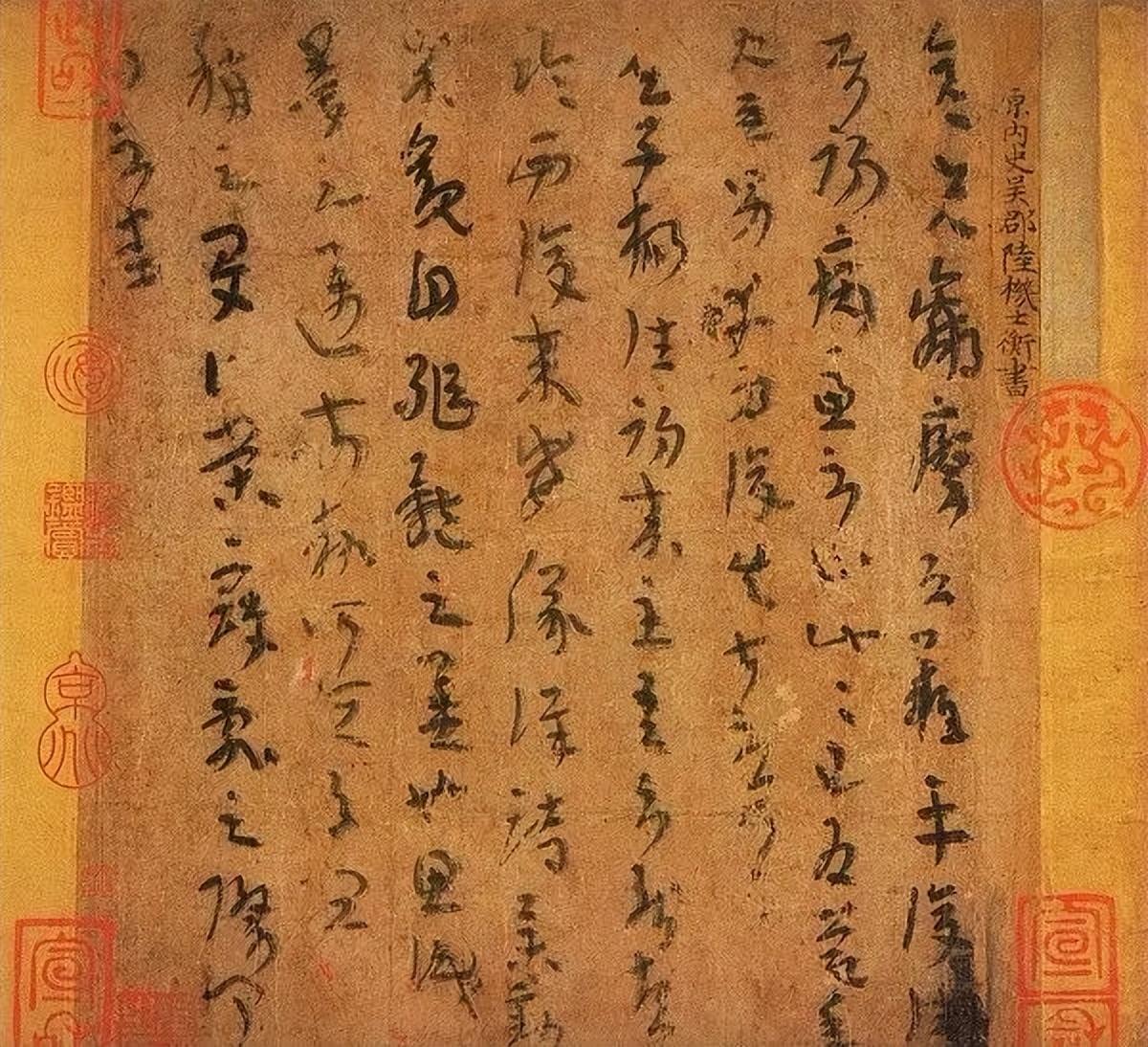
Plain post
The cursive script of "Ping Fu Tie" adopts "turning" and stippling throughout Continuous, with obvious bends in the trajectory of the stroke, the characters are independent, ancient and simple, not as charming as today's grass, and there is no "lifting and pressing" brushwork. Suo Jing's "Ode to a Teacher" and Huang Xiang's "Jijiu Zhang" are similar to this. In Wang Xizhi's cursive script, "Hanqietie" is similar to it, but "Yuanhuantie" obviously has the "Tiyen" style of writing, that is to say, "Hanqietie" has more ancient meanings, close to chapter grass, "Yuanhuan Tie" has more modern meanings, which are close to modern cursive, especially "Yuanhuan Tie", which obviously uses the "Tiyen" brushwork, and is a transitional work from "old style" to "new style".
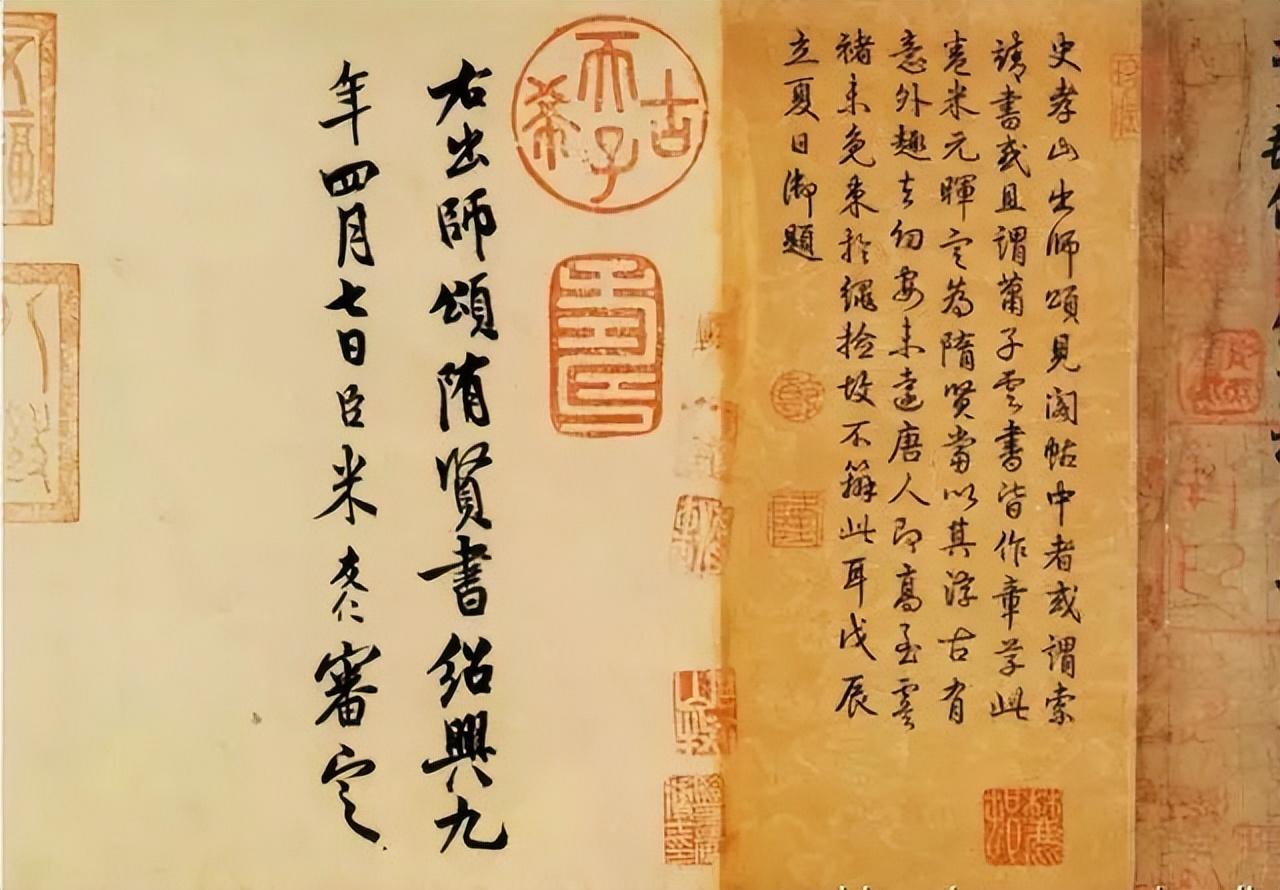
Ode to Master

Emperor Elephant "Quick Chapter"

"Ji Bai Tie"
In Jin calligraphy, "Jibai Tie" is also an example of this. In the "old style", the main methods of using the brush are "pressing, dragging, and turning", etc., while in the modern style, "lifting and pressing" is the main method. Differs from the old body. The reason for this change lies in the obviousness of the pen used for "lifting and pressing".
Wang Xizhi is good at official script, is familiar with chapters and grasses, and has a deep understanding of "making transfers". At the same time, he He is also a summarizer of regular script, and has deep experience and practice in the use of "Tiyen", so his cursive script presents the old with the new or the new with the old. Both "Hanqietie" and "Yuanhuantie" were works in Wang Xizhi's later years. At that time, he was already very familiar with the new style, but he still retained part of the legacy of the old style, and did not completely abandon the brushwork. In the great modern grass work "Seventeen Posts", the brush-turning method has not been completely given up. After all, Wang Xizhi came from the previous generation. He is very familiar with and has deep feelings for the world of brushwork before him.
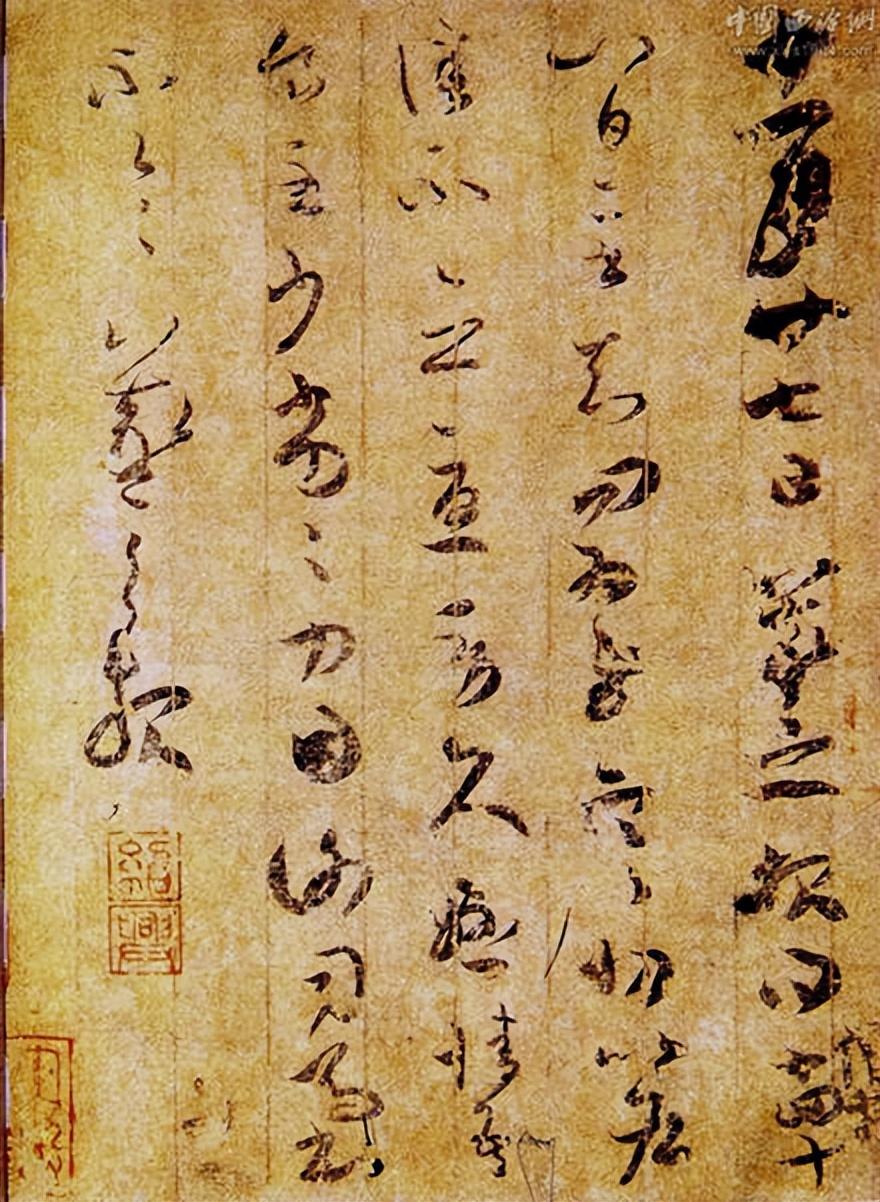
Wang Xizhi's "Hanqietie" on paper, 25.6×21.5cm, collection of Tianjin Museum< /span>
However, people after Wang Xizhi look at the era before Wang Xizhi. Existence, covering his sight.
The influence of regular script gradually penetrates, and the "lifting, staying, end and folding "Point exaggeration" penetrated into the writing of cursive script. By the Tang Dynasty, the "Tiyen" brushwork had a great influence, and the "Shizhuan" brushwork had almost completely faded out. From a practical point of view, there is nothing wrong with the inconvenience of being difficult to "turn". However, from the point of view of calligraphy art, people have lost too much!
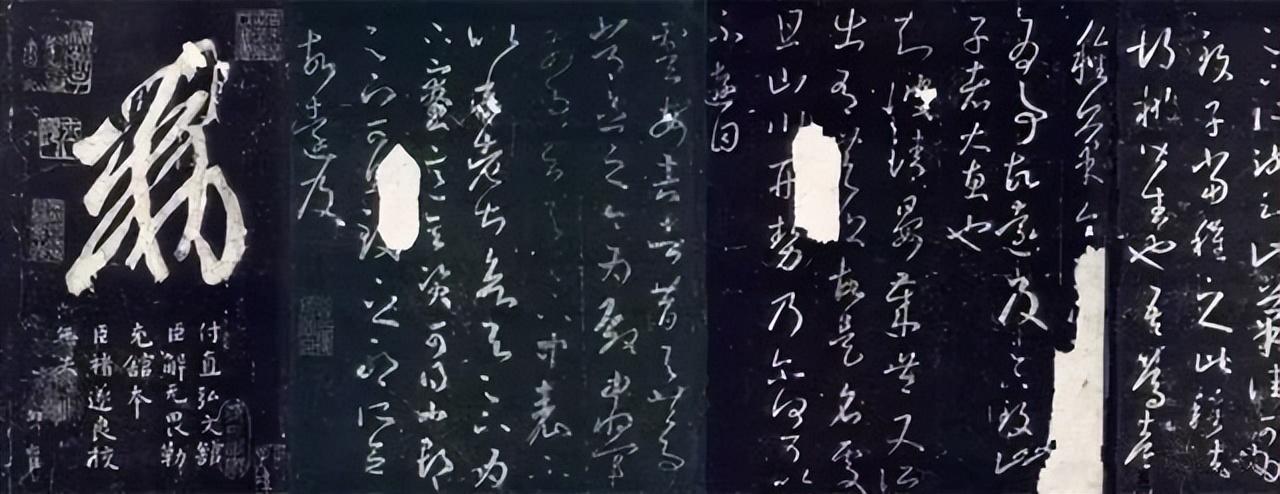
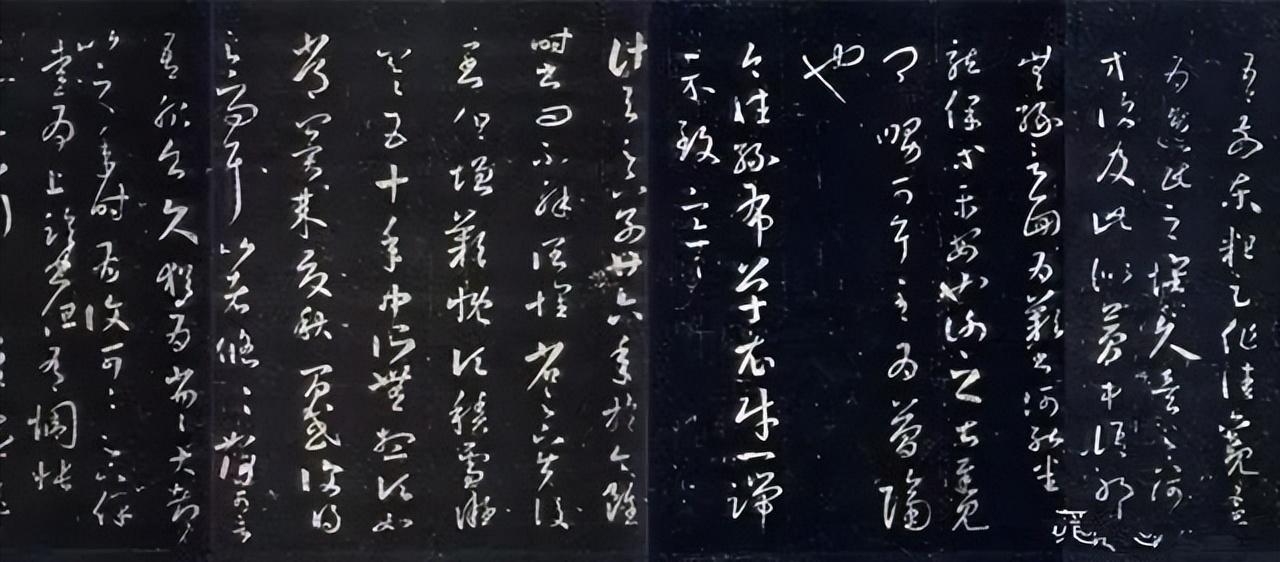
Wang Xizhi's "Seventeen Notes" rubbings
Especially cursive, "to transform into shape", "to make grass turn, can not form a word", the brushwork of "lifting, pressing and staying" seriously affects the continuity of cursive writing. On the other hand, it is too "simple" to focus the attention of writing on the ends and inflection points of the strokes. As a result, the potential weakness of the "Tiyen" brush is gradually revealed: the richness of the brushwork is thus lost, and the simple and timid strokes become a great threat.
To solve these problems, on the one hand, people seek Changes, adding setbacks, and adjusting rhythm (such as Huang Tingjian adding turning points in the middle of the lines), on the one hand, borrowing from the previous generation's "shifting" brushwork (such as Mi Fu using the eight sides of the front). Undoubtedly, they all succeeded. However, looking at history, after all, there are few successful people.
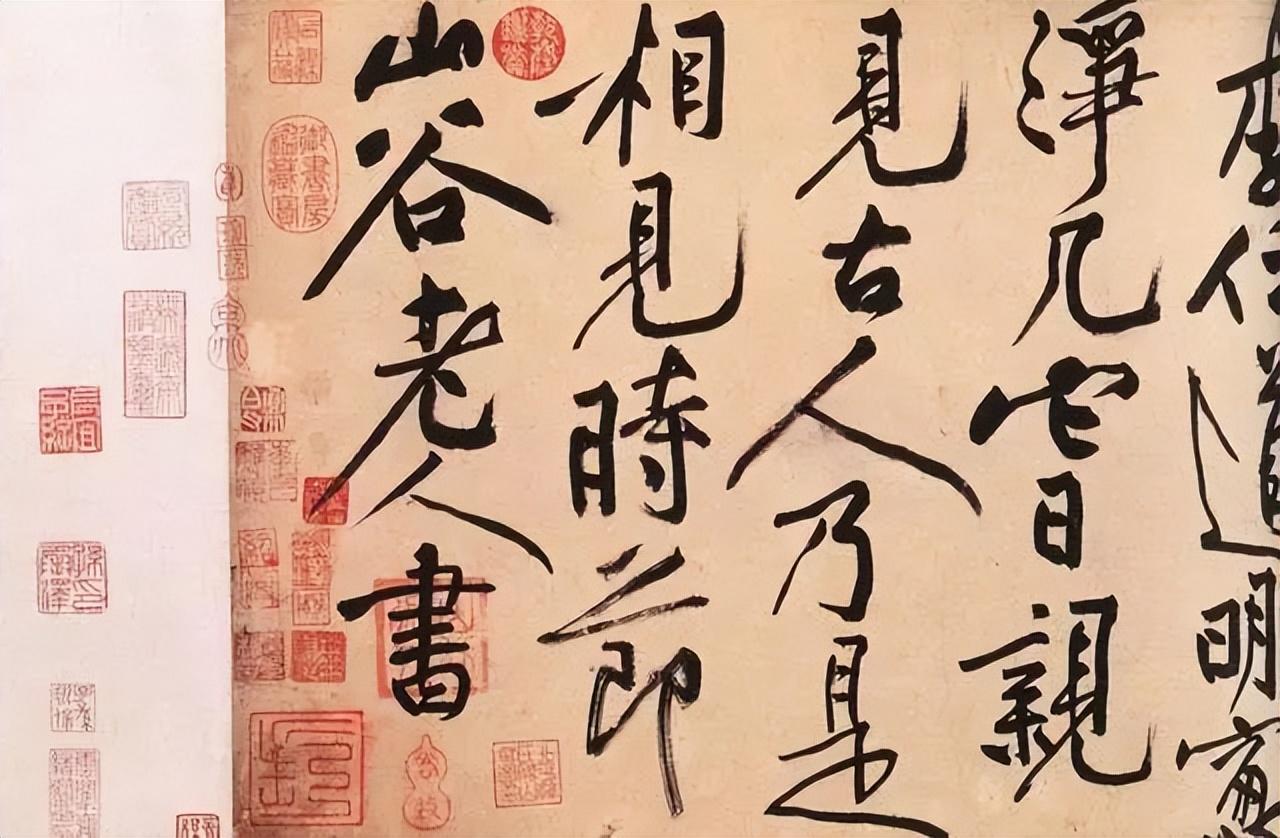
Huang Tingjian running script

Huang Tingjian cursive script
Since the problem lies in the calligraphy giant’s covering of the previous generation’s brushwork, today It is very necessary for calligraphers to seriously consider this issue. The evolution of brushwork should be considered comprehensively in order to choose. When learning old-style calligraphy, pay attention to "turning", and when learning modern-style calligraphy, do not abandon "lifting". Even the "painting" method of seal script and the "swinging" brushwork method of oracle bone inscriptions should be considered comprehensively in order to absorb nutrients from various aspects.
Articles are uploaded by users and are for non-commercial browsing only. Posted by: Lomu, please indicate the source: https://www.daogebangong.com/en/articles/detail/Wang%20Xizhi%20covered%20up%20the%20turning%20pen%20brushwork%20with%20lifting%20and%20pressing%20brushwork.html
 支付宝扫一扫
支付宝扫一扫


评论列表(196条)
测试